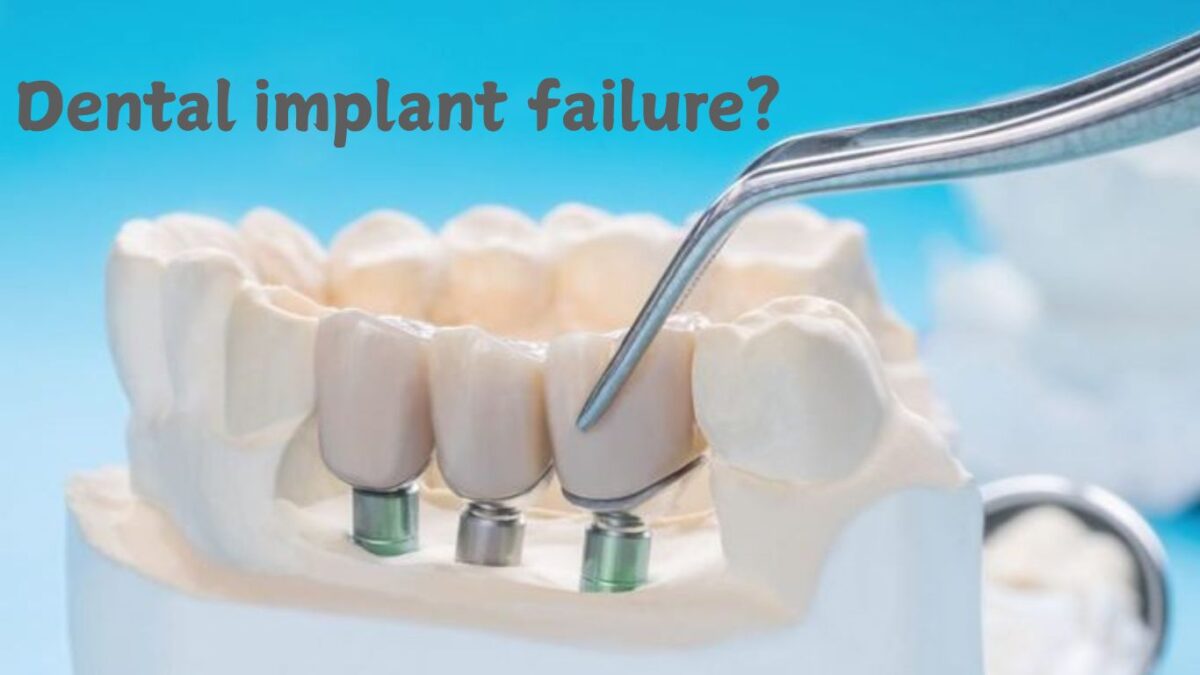Imagine going through the whole dental implant procedure only to experience persistent pain, loosening of the implant, or even its complete failure. While dental implants are known for their high success rates, sometimes complications like infections, low bone density, or osseointegration issues may come in the way of long-term success. It’s normal to feel disappointed when a procedure you trusted doesn’t work out as expected. But the good news is problematic dental implants can actually be replaced, giving you a second chance at achieving the smile you deserve.
In this guide, we’ll take you through a detailed, step-by-step approach to diagnosing and treating dental implant failure. We’ll explore the underlying causes of implant issues and discuss the various treatment options available. Whether you’re facing discomfort or simply curious about how a dental implant can be replaced successfully, this guide will help you make informed choices if you experience any issues with your dental implant.
Why do dental implants fail?
Poor Bone Density
Dental implants need to be anchored in a strong bone. If your jawbone is too thin or weak, the implant will not hold. In such situations, a bone graft or augmentation might be required to strengthen the bone before placing the implant.
Failed Osseointegration
Osseointegration is the process by which the implant fuses with the surrounding bone, it occurs when the bone does not integrate with the implant, and as a result the implant becomes loose or falls out. Factors like poor blood supply, infection, or excessive pressure during healing can disrupt this osseointegration process.
Nerve Damage
During implant placement, nerves in the jaw can sometimes be injured. Signs of nerve damage may include tingling, numbness, or pain in the tongue, lips, or chin. It is important for dentists to carefully plan & use imaging techniques to avoid these complications. Immediate dental evaluation is crucial if these symptoms occur.
Peri-Implantitis
Similar to gum disease, it is an infection that targets tissues near the implant. It is usually caused by a buildup of bacteria, causing inflammation. If left untreated, peri-implantitis can result in the loss of bone support, weakening the stability of the implant.
Health Factors
There are certain health conditions that can negatively impact the success of a dental implant:
Diabetes: Uncontrolled diabetes can impair the body’s healing capability, and the implant may not integrate properly with bone tissue
Teeth Grinding (Bruxism): Continuous grinding or clenching can place excessive pressure on the implant.
Smoking and Alcohol Consumption: Both can disrupt healing and the success of the implant.
Poor Oral Hygiene
Good oral hygiene is crucial for maintaining a dental implant. Lack of proper cleaning may cause bacterial infections and even loss of bone support around the implant. That’s why daily brushing, flossing, & regular dental checkups are essential to keep the area healthy.
What treatment options are available for failed dental implants?
1. Implant Removal
Implant removal becomes necessary when the implant is loose, infected, or has failed to properly integrate with the bone—a condition known as failed osseointegration. Another common reason is peri-implantitis, a progressive inflammatory condition affecting the tissues around the implant. Removal allows the area to heal, enabling assessment and treatment of any infection or inflammation.
2. Reimplantation
In many cases, a new implant can be placed after the failure of the original implant, but this depends on several factors including cause of failure, the condition of the surrounding bone, & the patient’s general oral health. Reimplantation is generally delayed until the site has healed & is free of infection. In some situations, the All-on-4 implant system may be used, offering full arch restoration with fewer implants—especially helpful for patients with outcomes.
3. Bone Grafting
Bone grafting is necessary when there is insufficient required when there is not enough bone volume or density to support a new implant. This procedure involves adding bone or a bone substitute to the affected area to promote new bone growth. Over time, the body integrates the graft material, creating a solid base for future implant placement. Healing typically takes several months, depending on the extent of grafting required and the patient’s overall health.
4. Treatment of Infection
Infection such as Peri-implantitis could affect the tissues surrounding a dental implant. If left untreated, it can lead to implant failure. Management involves:
Hydrotherapy: Thorough cleaning of the implant surface to remove bacterial biofilm.
Antibiotics: local antibiotics may be prescribed to control bacterial infection.
Laser therapy: Used to disinfect the affected tissues and assist in decontaminating the implant surface.
Early diagnosis & treatment of infection can help preserve the implant or facilitate better outcomes if removal and reimplantation are necessary.
5. Alternative Restorations
If reimplantation is not feasible due to significant bone loss, chronic infection, or other health factors alternative dental restorations may be considered. These include:
Dental bridges: Used to replace missing teeth by anchoring to adjacent natural teeth.
Removable dentures: A more affordable and less invasive option for replacing multiple missing teeth.
These solutions can help restore function and aesthetics when implant therapy is no longer suitable.
Comprehensive guide to dental implant replacement:
Consultation: Contact your dentist as soon as you notice any issues with your implant. Early intervention can help prevent further complications.
Assessment & Diagnosis: Your dentist will perform a clinical evaluation using 3D imaging and X-rays to identify the problem accurately.
Identifying the Root Cause: The evaluation helps determine the underlying cause, such as infection, poor osseointegration, peri-implantitis, or improper implant placement.
Corrective Surgery: Based on the diagnosis, your dentist will recommend the appropriate corrective procedure or other treatment options to address the issue.
Long-Term Monitoring: Following treatment, regular post-operative check-ups & proper care instructions are crucial for ensuring the long-term success of the implant.
Conclusion:
If you’re experiencing issues with a dental implant or need a replacement, we can assist you. At Smile in a Day, we provide expert care for dental implant failure at our clinics in Ashford, Barnet, and Rochester. Whether it’s discomfort, looseness, or damage, we’ll assess your implant & offer personalized solutions. Visit us at your nearest location for efficient, reliable treatment tailored to your needs. Book your appointment for dental implant assessment today.
Contact
Get In Touch With Us To Schedule Your Appointment Today!

